#brane cosmology
Explore tagged Tumblr posts
Text
The braneworld scenario and the cyclic cosmological model it spawned are both highly speculative.
"The Fabric of the Cosmos" - Brian Greene
0 notes
Text
Instead, in their approach, the two three-branes are attracted to each other – almost as though connected by tiny rubber bands – and this implies that each drives the cosmological evolution of the other: the branes engage in an endless cycle of collision, rebound, and collision once again, eternally regenerating their expanding three-dimensional worlds.

"The Fabric of the Cosmos" - Brian Greene
#book quote#the fabric of the cosmos#brian greene#nonfiction#brane#rubber band#paul steinhardt#neil turok#cosmology#evolution#collision#rebound#interconnectedness
0 notes
Text
alternate version of Dr. Latency's Freak Report where instead of brane cosmology stuff, they go with a slightly different theory that youkai are made of exotic particles that don't normally interact with electromagnetism and thus are usually invisible
the back half of the story is Renko doing math on a napkin to figure out if dark matter is made of youkai
96 notes
·
View notes
Text
HOW DO WE KNOW THE UNIVERSE IS INFINITE??
Blog#332
Saturday, September 16th, 2023
Welcome back,
The simplest cosmology that fits the large-scale characteristics of the universe is the so-called Friedmann—Lemaître—Robertson—Walker cosmology describing a spacetime that is homogeneous (same everywhere) and isotropic (has no preferred direction).
This simple cosmology is characterized, among other things, by a variable that represents spatial curvature. It can be positive, negative, or zero.

Our best observations to date strongly suggest that the universe has no spatial curvature. It may be expanding in time, but the geometry of space, at any given time, is Euclidean.
The simplest topology that corresponds to Euclidean geometry is that of flat, infinite space. So by Occam’s razor, i.e., the parsimony of assumptions, we can conclude that in the absence of evidence to the contrary, the universe appears infinite.

That does not mean that we know this for sure. In fact, there really is no way of knowing. What is beyond the limits of the observable universe is, well, not observable, not even in principle. So for all we know, just outside the observable universe there is a big bad wall.
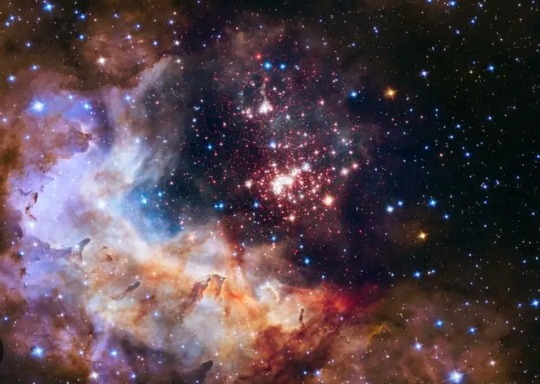
Or a brane-type singularity. Or fire-breathing pink unicorns preventing us from going any further. Nature is under no obligation, after all, to behave in a manner that we humans call reasonable.

But in our experience, Nature by and large does behave reasonably, and we might expect it to continue behaving reasonably even beyond the boundaries of the observable universe. That expectation, combined with the observation that the universe appears to lack spatial curvature, leads to the concept of a spatially infinite universe.
Originally published on www-forbes-com
COMING UP!!
(Wednesday, September 20th, 2023)
"CAN HUMANS REALLY LIVE ON THE RED PLANET??"
#astronomy#outer space#alternate universe#astrophysics#universe#spacecraft#white universe#space#parallel universe#astrophotography#infinite#how will the universe end#cosmology#cosmos
191 notes
·
View notes
Text
i've been thinking about the fallacy of attributing realism to a model and the "secret"/law of attraction/good old fashioned philosophy of bootstrapping american individualism. you know, the watered down possibly cosmic-themed self help inspirational business psychology you can get from everyone from esther hicks to rachel hollis to elizabeth holmes to anna delvey. you just have to believe in yourself and visualize the future you want to see in order to manifest it, and its attendant unspoken inverse, if it doesn't work you're not doing it right. the somewhere in time mentality. as long as you don't have an anachronistic penny in your pocket you'll be fine
so, much like in physics right there's this common misunderstanding among the public that if a model makes accurate predictions, this somehow confers upon it a status of becoming or having been all along physically real. the stars are projectors and we live on the surface of a black hole because of maldacena's ADS/CFT correspondence, we're embedded in either an 11 or 24 dimensional brane because of witten's m theory, there must be an infinite number of parallel earths because of everett's many worlds, and gell-mann's quarks are literally red blue and green even though they're smaller than photons. lord help us, if a majority of the population of the earth believes in wheeler's one electron or law from lawlessness, they will suddenly become true, so the thinking apparently goes, in this misconception of automatic realism. don't tell anyone about vacuum decay or the lack of a known upper limit for solar flares, or else they might happen
so like you see the connective tissue, right? in this misunderstanding of physics and scientific modeling, there's this idea that when you develop a sufficiently correct model, your name has a cosmological genesis story bestowed upon it. speak it and it becomes true. when in fact that's not how it works at all of course, the prevalence of a model is ideally defined by how useful its predictions are for a given experimental regime, which is how we get this overlapping patchwork of incompatible stories, which is why we don't and might never have a total and self-consistent model to explain everything
these parts always get left out of the pop-psych business philosophy as it adapts and expropriates concepts from science research to give itself a sheen of legitimacy. that any model's regime is necessarily limited, and if it had realism, it would also have borders, where its physical realness becomes less certain and eventually unknown, and the area outside its borders vastly outsizes the area it's designed to explain. that in actual practice it's more like stitching together a bunch of little explanations that govern their regime exceedingly well, and that the vast majority of scientists never see their work stitched in
but if the purpose of a system is what it does then there's a much darker undertone to what promoting this sort of magical thinking does to people: in practice it mostly serves to give people who had the opportunity for success something to attribute their success to other than wealth and privilege, in a way that keeps people who believe it despite not having opportunity locked in a futile cycle of "i must not be doing it right/i'm not good enough/something is wrong with me" instead of questioning why a limited number of people are granted opportunity
9 notes
·
View notes
Note
now that this Euclid telescope is on its way to L2 to to do some kind of survey of distant galaxies, want to explain what's up with these string theorists quantifying statistics of galaxy triangles or some shit? Do you know what I'm talking about? I never really got what that was about
I think you’re talking about this stuff, right?
So, the first thing to understand is that the whole “triangles” thing is a fanciful way to refer to three-point correlation functions. You’re measuring something (density of galaxies for galaxy surveys, temperature for the CMB) in three places, nothing more mysterious than that. The idea is that (if you subtract off backgrounds, yadda yadda), those three-point correlation functions should let you infer the three-point correlation functions of the quantum field theory that governed inflation (so, expectation values of three operators).
Currently, all of the data we have has only been good enough to get statistical significance for two-point functions (measure something at two places). Two-point functions can tell us some general things, but they don’t tell us a lot about the underlying physics. One way to think about why is that two-point functions are very constrained kinematically. If you’re looking at an isotropic patch of sky (which you’re always trying to do for stuff like this), then the two-point function can only depend on the distance between the two points. Fourier transform that and you’ve got a momentum, or a frequency, so really what two-point functions give you are a spectrum. That’s why you see a bunch of plots of the power spectrum of the CMB that look like this:

The three-point function tells you more, not just the spectrum but something about how whatever quantum fields that generated the data interact. (For certain theories, that’s actually all you need: for a scale-invariant (more properly, conformal) theory, the theory is uniquely determined by two-point and three-point functions.)
So what does this have to do with string theory?
Inflation is pretty much the only process we have evidence for that could probe anywhere close to the energy scale of string theory. As such, certain string theorists are quite interested in this stuff. There are a bunch of candidate quantum field theories of inflation, and some of them are “string theory inspired” in more or less direct ways, with stories about branes and curled up dimensions and so on. Evidence for any of those wouldn’t be a “smoking gun” for string theory because most of these things can be reproduced with a more normal quantum field theory, but it would at least be a validation of the model as inspirationally useful. (Plus, evidence for specific beyond-the-standard-model physics, which a lot of people would be quite happy to see anyway.)
The Quanta article I linked above suggests something more direct, though. This is based on a paper by Maldacena and Arkani-Hamed, Cosmological Collider Physics. Most of the paper is just filling out the math in the above argument: how different n-point functions can reveal different things about the quantum field theory that governed inflation, including finding evidence for particles with specific masses and spins. They do mention string theory in the introduction, where they briefly point out that, if we see a particle with spin greater than the graviton then we could interpret that as evidence for string theory, since having particles like that that are weakly interacting at such high scales seems to demand that a theory be string-theory-like in a broad sense. It wouldn’t refute string theory if we didn’t see those particles, though, since string theory doesn’t require that such things have a role in inflation specifically.
So anyway, yeah, missions like Euclid have the potential to tell us something about high-energy beyond-the-standard-model physics! There really is something meaningful to be excited about there. There’s nothing that’s “required to show up” though, and nothing that has the potential to “falsify string theory”.
8 notes
·
View notes
Text
This is exactly what 4 dimensional gymnastics would look like to a 3 dimensional audience. The video spellcheck algorithm has accidentally made a significant breakthrough in brane cosmology.
58K notes
·
View notes
Text
Huff and Puff
"Something from nothing and kicks for free." Nod to Dire Straits.
Space doesn't expand at a speed. It expands at a speed-per-unit-distance, a very different kind of rate. Light's 186,282 miles-per-second limit only applies to mass moving through space. The rate at which space itself expands, again speed-per-unit-distance, has no physical bounds on its upper limit.

far far away
beyond beyond
along the raging rim
of it all
creation's engines
flat out inflate
slinging something
from nothing
at a rate
meaningless
to any earthly
understanding
a hemorrhagic
cornucopia
of Higgs laced
ink
oodled with jitters
strings
and other
silly
braned things
just barely
there
itsy bitsy
dodgy dots
never
to be
fully found
somersaulting
up and down
top to bottom
both charming
and strange
sometimes material
others ethereal
but a few
of the grounds
sloshing around
our cagey eight ball's
murky mix
no matter though
the myriad marvels
their majesty or magnitude
for the primal pitch persists
indifferent
that bleak tsunami
ever bloating
bearing
the inscrutable heat
of invisible shadows
and shapeless silhouettes
like vague titanic lovers
thrashing
in their sleep
more
and more
and more
and more
it comes
spreading between
the ancient
calico swarms
of firefly furies
strewn
by the billions
upon billions
from the blistering
plasma
which bound them
to ignite
once
the dazzling
jewels
of the heavens
the sheer
architects
of light
now
mere zirconium
litter
antiquated afterthoughts
to be bullied
inexorably apart
to places
so laughably remote
not even photons
might hold
a hope
of reaching
each stranded
as isolated islands
forsaken
in a vast
black ocean
of unfathomable depth
then
one after another
the dusky clouds
of candles lit
shall lose
their flames
vanishing
as wicks burnt
scattered in
an everlasting
night
dead drift
destined
for consumption
like chum
devoured
by lurking monsters
who
at long last
the good
Professor Hawking
has predicted
will
in turn
whittle themselves
away
Higgs field - Named in honor of physicist Peter Higgs, is the field in particle physics theory that causes otherwize massless particles to acquire mass. A way to envision it would be as an aetherlike molasses permeating the universe which allows ethereal fragments of energy to manifest mass as they move through it. The drag of the molasses, so to speak, bestows mass.
brane - In string theory and related theories such as M-theory and supergravity, a brane is a hypothetical object with as many as eleven spatial dimensions to which string theory strings might adhere or occupy.
up, down, charm, strange, top, and bottom are designations of quarks, i.e. nuclear building blocks which come in these six types also sometimes referred to as flavors.
Those who may wish to learn about cosmology will do well to read any of Brian Greene's works. He is an excellent writer and interpreter who can convey wild physics to mere mortals.
Click on "Watch on > YouTube" to launch video
youtube
1 note
·
View note
Link
The multiverse may be a cool (and convenient) concept for comic books and superhero movies, but why do scientists take it seriously? In a new book titled “The Allure of the Multiverse,” physicist Paul Halpern traces why many theorists have come to believe that longstanding scientific puzzles can be solved only if they allow for the existence of other universes outside our own — even if they have no firm evidence for such realms. It’s easy to confuse the hypotheses with the hype, but Halpern says there’s a huge difference between the multiverse that physicists propose and the mystical realm that’s portrayed in movies like “Doctor Strange in the Multiverse of Madness.” “Some people accuse scientists of trying to delve into science fiction if they even mention the multiverse,” Halpern says in the latest episode of the Fiction Science podcast. “But the type of science that people are doing when they talk about the multiverse is real science. It’s far-reaching science, but it’s real science. Scientists are not saying, ‘Hey, maybe we can meet another Spider-Man and attack Kingpin that way.'” On one level, the concept of a multiverse — encompassing the paths that the universe takes as well as the roads not taken — addresses our instinct to wonder “what if” (which happens to be the title of a Marvel multiverse comic-book series). For example, what if Marty McFly’s mother missed out on meeting his father in “Back to the Future”? “This whole idea of ‘which world is better, which world is worse’ — this is something people think about a lot, and inspires notions like the multiverse, where you imagine what would have happened if the universe developed differently, what would have happened if history was different,” Halpern says. “It’s a very popular question for us, and could well stem from our survival instincts in terms of planning.” Multiplicity of multiverse motivations “The Allure of the Multiverse: Extra Dimensions, Other Worlds and Parallel Universes,” by Paul Halpern. (Basic Books) For physicists, however, the multiverse isn’t a matter of wondering where they’d be if they went for an MBA rather than a Ph.D. Instead, the idea pops up in several scientific contexts. Quantum mechanics gave rise to deep questions about how the act of observation affects the reality being observed. The effort to answer those questions led some physicists to theorize that reality splits into different versions that go their separate ways, in line with what’s now known as the Many Worlds Interpretation. On a different front, physicists have tried to reconcile the seemingly inconsistent implications of quantum mechanics and general relativity by proposing the existence of extra dimensions. These physicists say the inconsistencies can be mathematically resolved if there are, say, six or seven undetected dimensions in addition to our universe’s four-dimensional spacetime. A field of physics known as brane cosmology speculates that other realms of existence (or “branes,” short for membranes) could exist in parallel to our own realm. And then there’s the Big Bang. To explain what they’re observing on the far frontiers of our accelerating universe, astrophysicists have proposed that the cosmos got its start in a bubble burst of inflation. Some have followed the trail even further, concluding that there’s no reason why our universe couldn’t spawn a multitude of bubble universes with different properties. (Sci-fi author Gregory Benford worked the idea into a 1998 novel titled “Cosm.”) Where’s the evidence? Paul Halpern is a professor of physics at Saint Joseph’s University. (Image courtesy of Saint Joseph’s U. via Basic Books) In his book — and in our podcast — Halpern traces the development of these theories, as well as efforts to track down evidence showing that a particular conception of the multiverse is correct. Scientists have searched for traces of the multiverse at work in the temperature variations of cosmic microwave background radiation — the so-called afterglow of the Big Bang. They’ve tried to detect primordial gravitational waves that could tell them about the history of cosmic inflation. They’ve looked for signs of gravitons at the Large Hadron Collider, or small-scale variations in the force of gravity that could point to interactions with extra dimensions. So far, these scientists have struck out. Some have even given up, after concluding that the multiverse hypothesis is an unprovable “theory of anything” and therefore shouldn’t be considered science. Despite the strikeouts, Halpern hopes physicists will keep on swinging. “The argument against even considering multiverse models is the lack of observational evidence,” he says. “However, there are many new tools in science that could be used to probe what happened at the beginning of our universe, right after the Big Bang.” Fine-scale measurements of polarization patterns in the cosmic microwave background radiation could still turn up evidence of “scars” left behind by collisions with other bubble universes. There’s still a chance that gravitational-wave surveys could reveal evidence of interactions with other universes. “And finally, there’s a burgeoning area of simulating cosmology, and looking to see what models suggest the production of other universes,” Halpern says. “That wouldn’t be experimental proof, but that would provide an important clue as to whether or not you can have our universe with what we believe is an initial state of ultra-rapid expansion called inflation.” So, is the multiverse for real? Halpern is optimistic that scientists will eventually find ways to answer that question, even though they’ve found nothing but dead ends so far. “I look at the history of physics, and there are so many things that started with false starts,” he says. Halpern points out that it took decades for physicists to find sufficient evidence for the existence of dark matter and dark energy, black holes and gravitational waves — long-shot efforts that led to Nobel Prizes. “We have to be patient sometimes with theoretical physics and its predictions,” he says. Head on over to the original version of this posting on Cosmic Log to get Paul Halpern’s reading recommendations for multiverse mavens. For still more about the multiverse, check out our previous Fiction Science interview with string theorist Brian Greene — plus a doubleheader with physicist Michio Kaku talking about “The God Equation” and “Quantum Supremacy.” My co-host for the Fiction Science podcast is Dominica Phetteplace, an award-winning writer who is a graduate of the Clarion West Writers Workshop and currently lives in San Francisco. To learn more about Phetteplace, visit her website, DominicaPhetteplace.com. Stay tuned for future episodes of the Fiction Science podcast via Apple, Google, Overcast, Spotify, Player.fm, Pocket Casts and Radio Public. If you like Fiction Science, please rate the podcast and subscribe to get alerts for future episodes. The post Why Serious Scientists Are Mesmerized by the Multiverse appeared first on Universe Today.
0 notes
Text
No clearly God is going to explain to people who won’t even have humor or miasma theory, to explain disease, till the Greeks conquer them, about 11-dimensional brane cosmology with two timelike dimensions. Because clearly that is the most pressing business the Ground of Being could possibly have with a human community.
There's a curious but popular notion circulating around the church these days that says God would never stoop to using ancient genre categories to communicate. Speaking to ancient people using their own language, literary structures, and cosmological assumptions would be beneath God, it is said, for only our modern categories of science and history can convey the truth in any meaningful way. In addition to once again prioritizing modern, Western (and often uniquely American) concerns, this notion overlooks one of the most central themes of Scripture itself: God stoops. From walking with Adam and Eve through the garden of Eden, to traveling with the liberated Hebrew slaves in a pillar of cloud and fire, to slipping into flesh and eating, laughing, suffering, healing, weeping, and dying among us as part of humanity, the God of scripture stoops and stoops and stoops and stoops. At the heart of the gospel message is the story of a God who stoops to the point of death on a cross. Dignified or not, believable or not, ours is a God perpetually on bended knee, doing everything it takes to convince stubborn and petulant children that they are seen and loved. It is no more beneath God to speak to us using poetry, proverb, letters, and legend than it is for a mother to read storybooks to her daughter at bedtime. This is who God is. This is what God does.
—Rachel Held Evans, Inspired, p.11-12
681 notes
·
View notes
Video
youtube
Liked on YouTube: Have We Really Found The Theory Of Everything? || https://www.youtube.com/watch?v=E4CsY5B3BoI || Start using AnyDesk, the blazing-fast Remote Desktop Software, today at https://ift.tt/mnHK46b -------------------------------------------------- Written by Joseph Conlon Professor of Theoretical Physics, University of Oxford Author, Why String Theory? https://ift.tt/0R73Q8M Edited and Narrated by David Kelly Thumbnail Art by Ettore Mazza Animations by Jero Squartini https://ift.tt/TcXzdag Huge thanks to Jeff Bryant for his Calabi-yau animation. Footage from Videoblocks, Artlist. Footage of galaxies from NASA and ESO. Music from Epidemic Sound, Artlist, Silver Maple and Yehezkel Raz. Image Credits: NRAO Edward Witten Paul, Dirac photo By Science Museum London / Science and Society Picture Library - The physicists Paul Dirac, Wolfgang Pauli and Rudolf Peierls, c 1953.Uploaded by Mrjohncummings, CC BY-SA 2.0, https://ift.tt/CNySYw5 Timelapse video illustrating failure of cytokinesis with anillin knockdown and addback of GFP-Anillin S635D . Time from anaphase onset indicated in hours:min:sec. Date 12 January 2017 Source S5 Video from Kim H, Johnson J, Lera R, Brahma S, Burkard M (2017). "Anillin Phosphorylation Controls Timely Membrane Association and Successful Cytokinesis". PLOS Genetics. DOI:10.1371/journal.pgen.1006511. PMID 28081137. PMC: 5230765. LHC scattering by Lucas Taylor / CERN - https://ift.tt/I5gSvYo, CC BY-SA 3.0, https://ift.tt/a8QMvBR Perth Samuel Wiki, CC BY 4.0 https://ift.tt/xzhLj59, via Wikimedia Commons Darwin De Jeremy De Guzman - https://ift.tt/ycZSnzX, CC BY 2.0, https://ift.tt/6fo7sZh Freeman Dyson ioerror, CC BY-SA 2.0 https://ift.tt/jD9CU46, via Wikimedia Commons Video of String Theory conference from Stoney Brook Archives. 00:00 Introduction 05:28 The Five String Theories 14:05 One Theory To Rule Them All (M Theory) 26:07 Brane Cosmology 35:05 Proving The Unprovable #stringtheory #mtheory
0 notes
Text
DOES THE BIG BANG THEORY EXPLAIN COSMIC CREATION??
Blog#321
Wednesday, August 9th, 2023
Welcome back,
The James Webb Space Telescope took pictures of galaxies forming when the universe was young. Some mature galaxies in the early universe surprised scientists as they didn't fit existing theories. Some media wrongly claimed these images disproved the Big Bang, but that's not true. Let's clarify what the Big Bang Theory actually explains.

The Big Bang isn't about the universe being created from nothing. It's a theory about how the universe evolved. The Inflationary Universe model, which guides cosmology, doesn't address the universe's origin. The birth of space, time, matter, and energy isn't covered.
The first version of the Big Bang theory came from Georges Lemaître, a quiet priest and physicist. He used Einstein's ideas to explain the universe's expansion. Lemaître proposed the "primeval atom." He knew about a problem called Kant's First Antinomy, which questioned how the universe could have a cause.
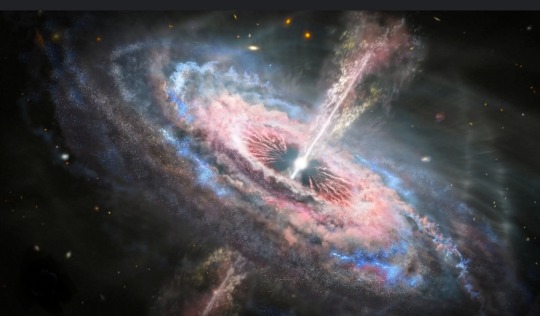
Lemaître used quantum mechanics to suggest that all matter and energy were in a big cosmic atom. This atom decayed without a cause, solving the problem.
But Lemaître's idea didn't explain where the primeval atom came from. This isn't how cosmology explains things now, but it's a step in the story of understanding our universe's history.
As we delve deeper into the story of cosmic creation, we find that the modern version of the Big Bang Theory builds upon Lemaître's foundational ideas.
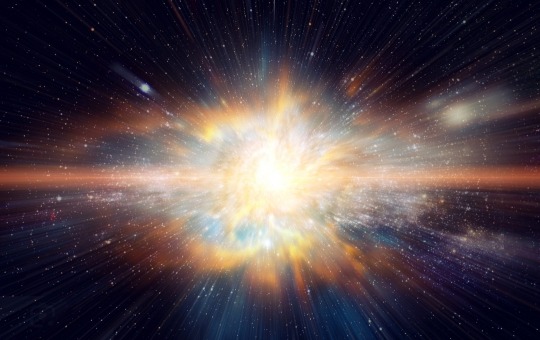
It proposes that around 13.8 billion years ago, the universe began as an incredibly hot and dense point, smaller than a single atom. This state is commonly referred to as a singularity.
However, the Big Bang Theory does not provide a definitive explanation for what triggered the initial expansion or where the singularity came from. The theory only outlines the subsequent expansion, cooling, and development of the universe as we know it today.
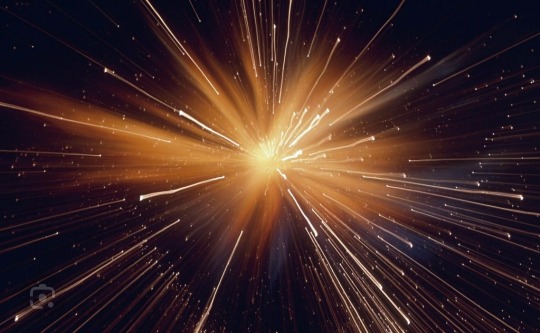
One significant concept within the theory is the cosmic microwave background radiation, often dubbed the "afterglow" of the Big Bang. This faint radiation is detectable throughout the universe and serves as compelling evidence supporting the idea of a hot and dense early universe.
While the Big Bang Theory doesn't provide answers to all the questions about cosmic creation, it has successfully explained the formation of galaxies, stars, and the distribution of elements we observe in the universe today.
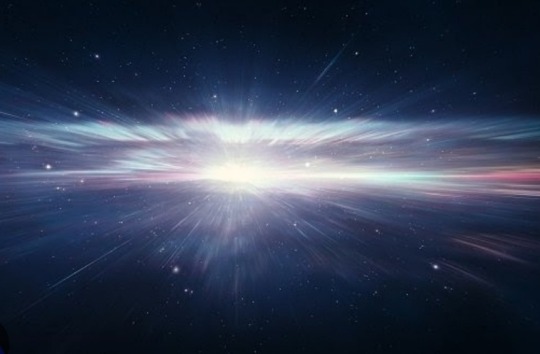
It provides a framework for understanding the evolution of our cosmos, while the quest to comprehend the ultimate origin of the universe continues to be a subject of intense scientific exploration and speculation.
As our understanding of the universe continues to advance, scientists are exploring theories that could potentially shed light on the questions the Big Bang Theory leaves unanswered. Concepts like multiverse theories, brane cosmology, and string theory offer alternative perspectives on the origin of our universe and its place within a broader cosmic landscape.
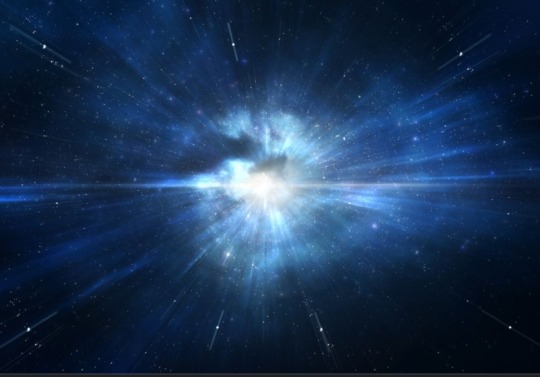
While these theories remain speculative and unproven, they highlight the ongoing quest to unravel the mysteries of cosmic creation. As we eagerly await the data and insights that cutting-edge instruments like the James Webb Space Telescope will provide, we are reminded that the pursuit of understanding our universe's origin is an ongoing journey that inspires awe and curiosity in both scientists and the general public alike.
COMING UP!!
(Saturday, August 12th, 2023)
"HOW MUCH SPACE JUNK IS THERE??"
#astronomy#outer space#alternate universe#astrophysics#universe#spacecraft#white universe#space#parallel universe#astrophotography#earth#moon mars#moon
53 notes
·
View notes
Note
Also consider looking into the Electric Universe Theory. While I don't agree with everything being discussed over there, some of the science is genuinely astonishing in how much better it fits what we are seeing in reality.
The first video I would recommend is this one, as it has the most scientific evidence for this alternate cosmology theory:
youtube
The next video is also rather intriguing at how well the theory matched up with actual experience, compared to the standard gravitational model:
youtube
...Yes, these are episodes 2 & 3, and I'm not including episode 1. I think that episode 1 is perfectly fine and poses some very interesting ideas, but I also think it dilutes the cosmological modeling too much with things most people can't accept. So it's better to view the following two first, then go looking for the first in the series.
Remember, I'm not saying this is how things are, but I am saying this is a closer match for explaining what we are actually seeing than the previous theories posit.
And remember, these are theories. There is no 100% correct this-is-how-it-is to them. We can only constantly review, test, refine...and start all over again when we cannot explain what is going on without resorting to excessive and even absurd amounts of theoretical contortionism.
I'm not saying the universe is simple! I am saying that if we have to bend a theory into pretzel knots and fray it with exception after exception after exception...maybe it's time to rethink the whole thing. And I do think the Electric Universe Theory has a bit more going for it.
Certainly, it explains--through multiple observable phenomena which have been proven to scale and still work at several different levels--quite a lot more than standard gravitational theory. And it would certainly have an equal chance to explain "bubble branes" and multiple universes, too!
Is Earth and humans the primary tipping point in the fight against It? Do other species in other universes have their equivalent of the events of books 1 and 3?
They wouldn't be one-to-one equivalents: but ripples spreading out from some Earth-based wizardly events do intersect (not usually in terms of iinear temporality) with other ripples, and change one anothers’ structures and trajectories. ...Nor is our world/universe alone in generating tipping points, some of them quite large. But since the stories I'm telling are human-centered and therefore primarily local, there's not a lot of time in the local narrative flow to get into tipping points further afield.
Meanwhile, re: the statement you also messaged me—
Also, the number of universes can't be infinite if entropy exists.
That's a very interesting take, and one with which some prominent thinkers working in outer-dimensional physics would appear to disagree. I would invite you to spend some time getting deeper into the literature on this. Of special interest would be current original papers discussing the mathematics of brane cosmology and "bubble universes" as regards putative energy transfer between/among them... as this would naturally affect the way what we think of as entropy works.
You're unlikely to find any answers quite as conclusive as your statement, but you're absolutely going to find a whole lot more questions.
HTH!
91 notes
·
View notes
Text
So if this is correct gravity is like a layer that floats on the water of time
The substance (energy*) under the oil is unaffected but anything that gains mass through passing through the layer gains gravity.
Without gravity time and matter would accelerate to the SoL
I think its the A* and we in fact inside the event horizon of it. Then the infolding of energy in quatum is the slowing force of the universe.
Velocity to mass
A attractor between our atoms and cosmological phenomenon.
So basically each brane acts like a 2d on a lower dimension to a higher dimension.
* no its not that its the quantum feild being generated by the velocity transfere of energy into the inertia of mass on an inverse plane of contaction to the expanding plane of acceleration between strings and cosmological events. For true infinity and I mean expanding universe to occur there must be at both ends of the spectrum expansion&contraction. Therefore making a lorenze attractor between time (energy excitation of intrinsic vibration) and gravitational forces (condensed action between objects in space) and a recirculating energy transfere. Could be geometry expressed as a tesseract (unfolding enfolding) between 2x2dminsional planes
(Its really an electro magnetic storm cloud that your trying to model therefore predict therefore control)

I like the diagrams
1 note
·
View note
Text
hello my name is @disaronnus and i inhabit every one of the queer branes of the Sherlock Holmes multiverse
(a fun bit of wordplay that came out of a Force Over Distance/Cleanwhiteroom discussion yesterday with @picnokinesis)
#picnokinesis#queer branes of the sherlock holmes multiverse#sherlock holmes#stargate universe#sgu#cleanwhiteroom#cwr#force over distance#FoD#queer#string theory#brane cosmology#superstring theory#m-theory
4 notes
·
View notes

